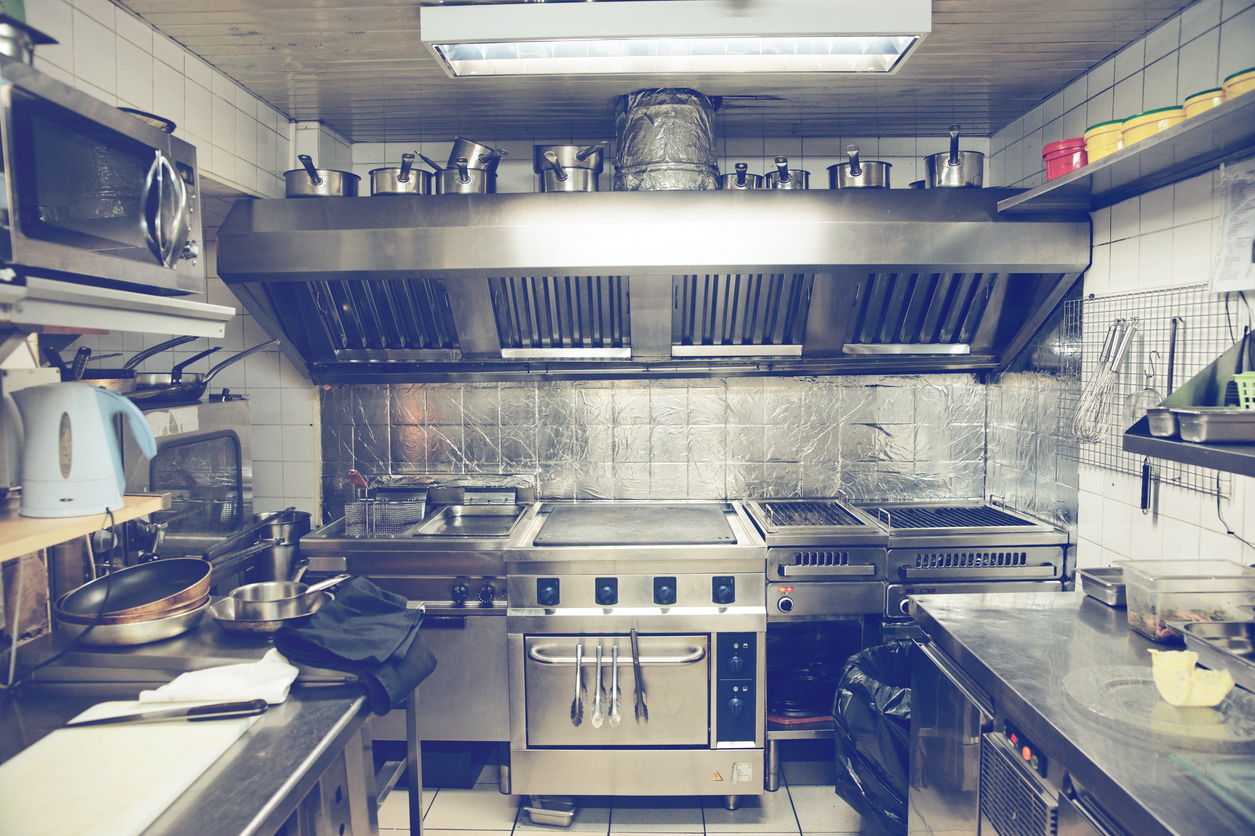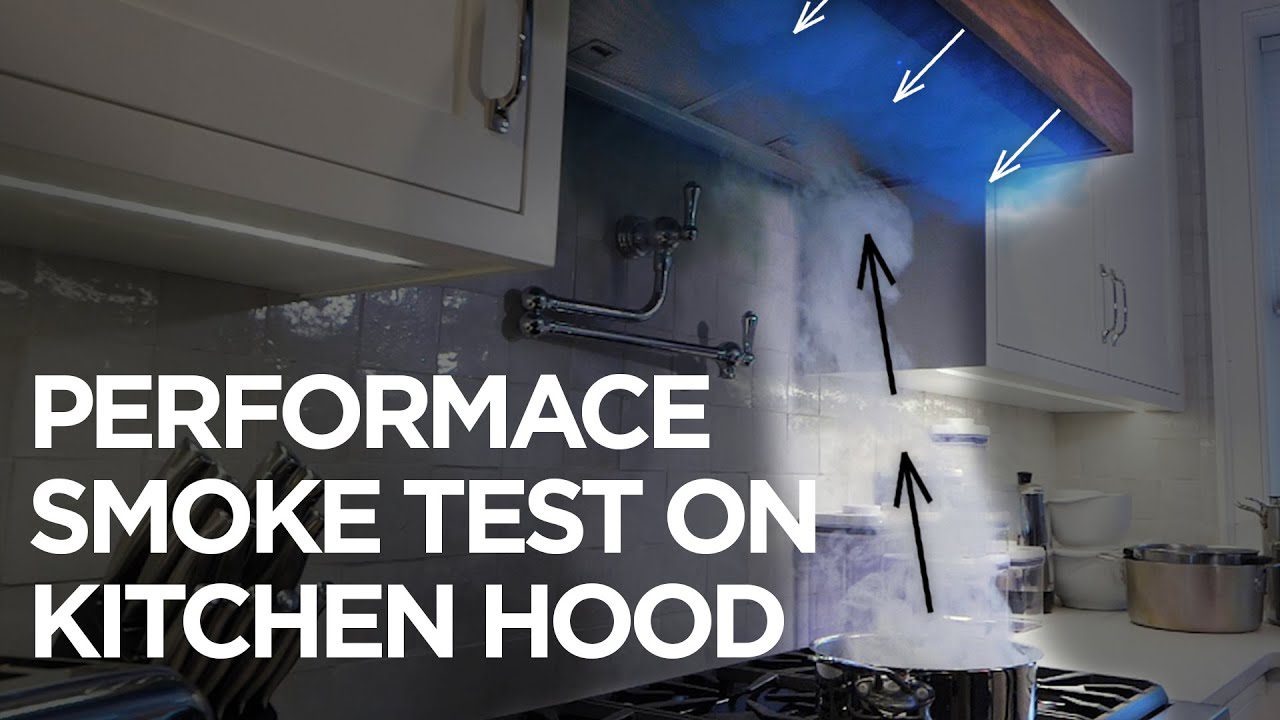If you need to test the suction of your range hood, there are a few different ways that you can do so. One way is to take a piece of paper or a small sheet and hold it up to the exhaust port of the range hood. If the paper is pulled towards the port, then the suction is strong enough.
Another way to test the suction is to turn on the range hood and hold your hand up to the exhaust port. If you feel a strong airflow, then the suction is adequate.
- Place a piece of paper or a tissue near the edge of the range hood
- Turn on the range hood and wait for it to reach full power
- Hold the paper or tissue in place and see if it is pulled towards the range hood
- If the paper or tissue is pulled towards the range hood, then the suction is working properly
Performance smoke test on kitchen hood exhaust and make up air
How Much Suction Should a Range Hood Have?
A range hood should have enough suction to move about 300 cubic feet of air per minute. To find the right size for your stove, you’ll need to know the BTU rating of your stove and multiply it by 100. This will give you the minimum CFM that you need for your range hood.
How Can I Improve My Range Hood Suction?
If your range hood isn’t drawing air away from the stove top as efficiently as it used to, there are a few things you can do to improve its suction. First, check the filters and clean them if they’re dirty. Clogged filters will impede airflow and reduce suction.
Second, make sure the fan blades are free of debris so they can spin freely. Third, check that the vent pipe leading from the range hood to the outside is clear and not obstructed in any way. Finally, if all else fails, consult a professional for help troubleshooting your range hood’s suction issues.
How Do You Measure a Cfm for a Range Hood?
If you’re in the market for a new range hood, you may be wondering how to measure CFM (cubic feet per minute). This is an important metric to consider when selecting a range hood, as it will determine the overall efficiency of the unit. In this blog post, we’ll show you how to measure CFM for a range hood so that you can make an informed decision when purchasing your next appliance.
To measure CFM, you’ll need to use a special tool called an airflow meter. You can purchase one of these online or at most hardware stores. Once you have your airflow meter, follow these steps:
1. Place the airflow meter in the center of the room where your range hood will be installed.
2. Turn on the range hood and set it to its highest setting.
3. Hold the airflow meter up to the exhaust vent of the range hood and wait for it to register a reading.
The reading should be given in cubic feet per minute (CFM). If your rangehood has multiple settings, repeat this process on each setting and compare the results. Select the setting with the highest CFM rating for optimal performance.
How Do You Troubleshoot a Range Hood?
If your range hood isn’t working properly, there are a few things you can do to troubleshoot it. First, make sure that the power is turned on and that the unit is plugged in. Next, check to see if the venting system is clear of any obstructions.
If the venting system is clear and the unit is still not working, you may need to replace the motor or other parts. To do this, you’ll need to consult your owner’s manual or contact a qualified repair person.


Credit: www.hoodmart.com
How to Improve Range Hood Suction
If your range hood isn’t venting properly, it could be due to a number of issues. Here are some tips on how to improve range hood suction:
1. Make sure the hood is the correct size for your stove.
If it’s too small, it won’t be able to effectively remove smoke and odors from your kitchen.
2. Check that the ductwork connecting your hood to the outside is in good condition and not blocked.
3. Clean the filters regularly – grease and dirt can build up over time and reduce suction power.
4. Adjust the fan speed to find the right balance between removing cooking smells efficiently and keeping noise levels down.
How to Test Exhaust Hood
Exhaust hoods are an important part of any commercial kitchen. They help to remove smoke, grease, and odors from the air, keeping the kitchen area clean and safe. But exhaust hoods need to be regularly tested to ensure that they are working properly.
There are two main types of exhaust hood tests: static pressure and dynamic pressure. Static pressure tests measure the amount of airflow that is being pulled through the hood by the fan. Dynamic pressure tests measure the resistance of the ductwork to airflow.
To test your exhaust hood’s static pressure, you will need a manometer, which is a device that measures air pressure. Attach one end of the manometer to the exhaust port on the hood and turn on the fan. Then, use the other end of the manometer to measure the amount of airflow coming out of the port.
The reading should be between 0.1 and 0.2 inches of water column (wc).
To test your exhaust hood’s dynamic pressure, you will need a pitot tube, which is a device that measures airflow velocity. Attach one end of the pitot tube to the exhaust port on the hood and turn on the fan.
Range Hood Not Pulling Air
If your range hood isn’t pulling air, there are a few possible causes. First, check to make sure that the hood is properly vented to the outside. If it’s not, then you’ll need to have a vent installed.
Another possibility is that the ductwork leading from the hood to the outside is obstructed. This can happen if lint or other debris builds up in the ducts. To clean them out, you’ll need to disconnect the ducts from the hood and use a vacuum cleaner with a long hose attachment to reach inside and remove any blockages.
Finally, if your range hood has an internal fan, make sure that it’s turned on. If none of these solutions solve the problem, then you may need to replace your range hood altogether.
Conclusion
If your range hood isn’t working properly, it could be due to a problem with the suction. To test the suction of your range hood, follow these steps:
1. Place a piece of paper or cardboard on the stovetop beneath the range hood.
2. Turn on the range hood and observe how quickly the paper or cardboard is drawn up into the hood.
3. If the paper or cardboard is not drawn up into the hood, or if it takes longer than a few seconds, then there may be a problem with the suction of your range hood.
4. If you think there may be a problem with your range hood’s suction, contact a qualified technician for further diagnosis and repair.

